Abstract
Data on human monkeypox collected in Zaire during the six years 1981-86 were analysed to assess the extent of interhuman transmission of monkeypox virus. Among the 2278 persons who had close contact with 245 monkeypox patients infected from an animal source, 93 fell ill and were presumed to have been infected from the known human source: 69 of these were spread in the first generation, 19 in the second generation, and the remaining five cases in the third and fourth generation.
The secondary attack rates were correlated with the age, sex, place of residence, and vaccination status of the contacts. There was an overall 3% probability of becoming ill following infection from a known human source. The affected household was the main focal point for interhuman transmission of monkeypox virus. The highest attack rate (11.7%) occurred among unvaccinated household contacts in the age group 0-4 years. However, the majority of susceptible persons who had been close to patients in the confined space of poorly ventilated huts failed to develop illness. There was no evidence of an increase in the secondary attack rate between 1970-80 and 1981-86.
The inefficient spread from person to person, even in conditions of maximum exposure, supports the concept that monkeypox virus is poorly adapted for sustained transmission between humans and that such transmission does not pose a significant health problem.
Full text
PDF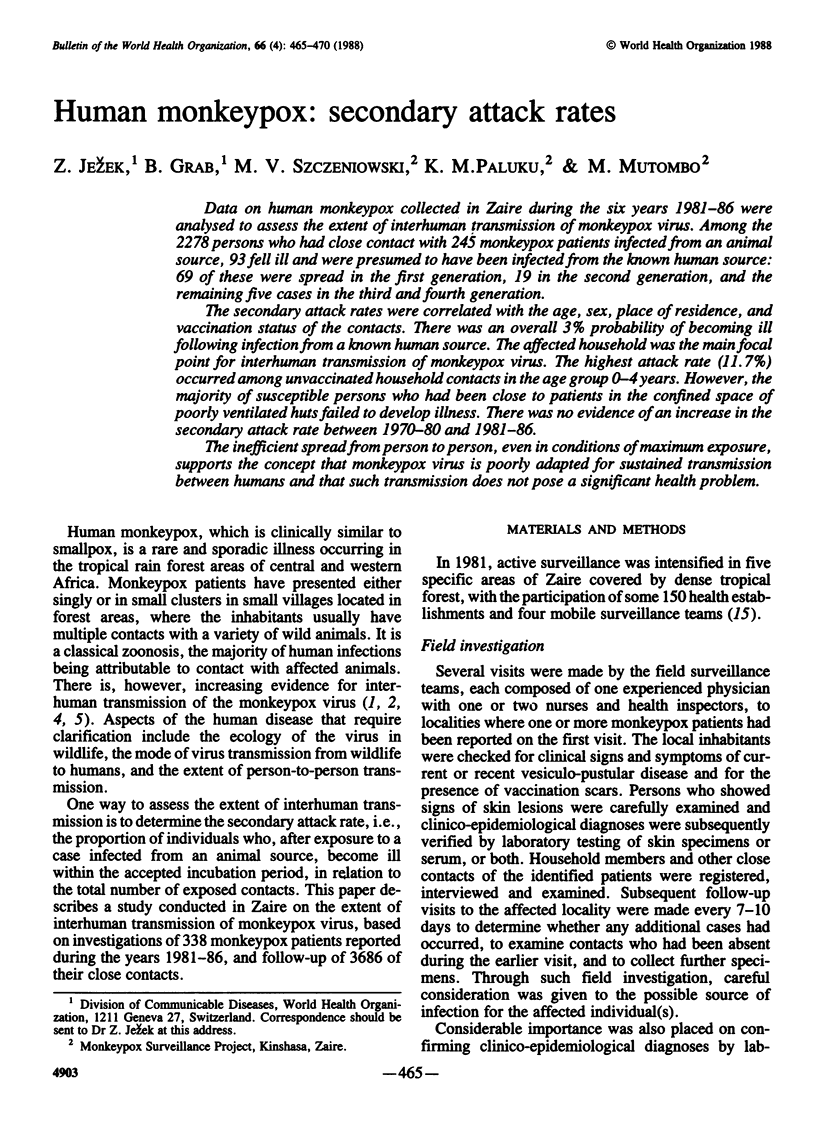
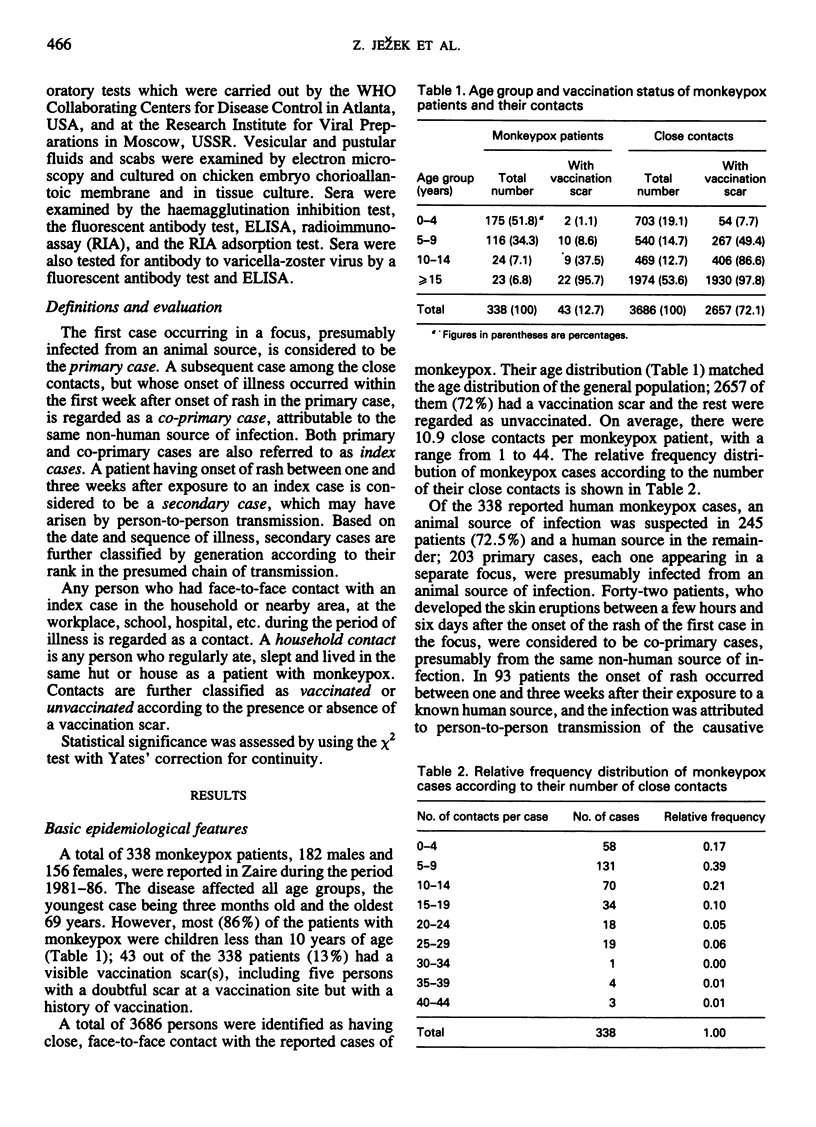
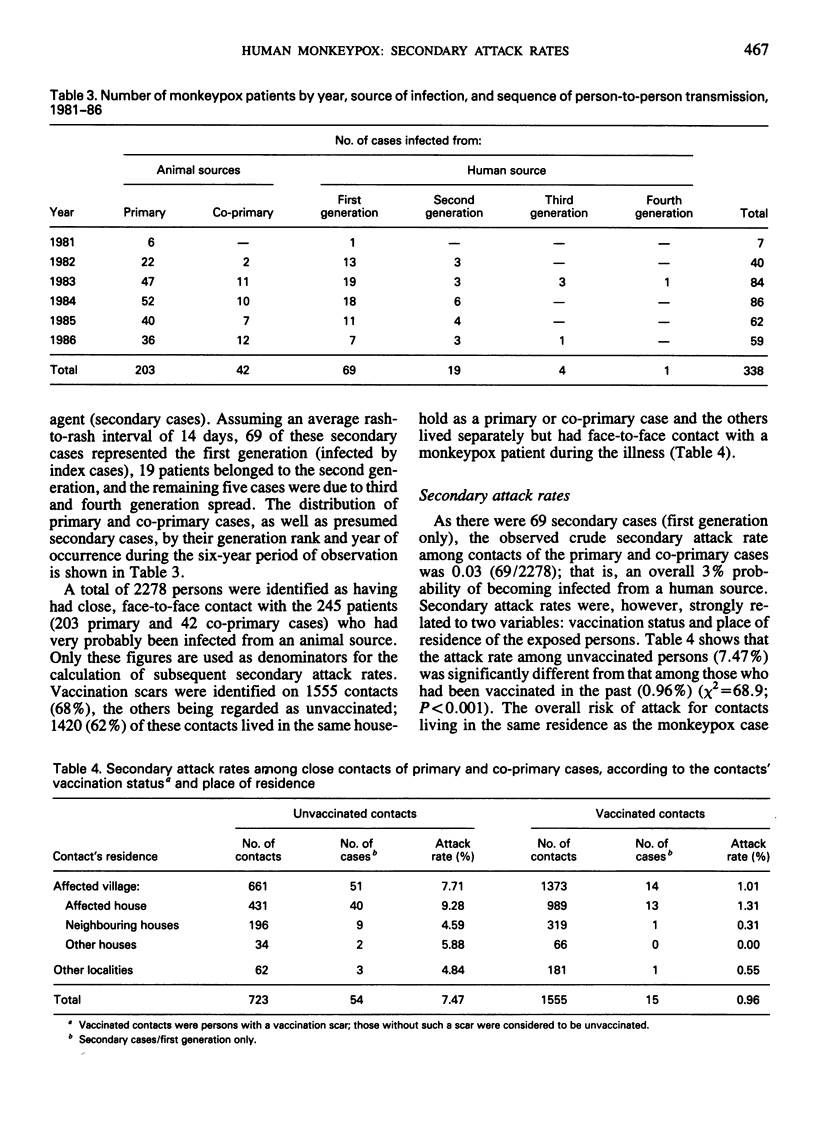
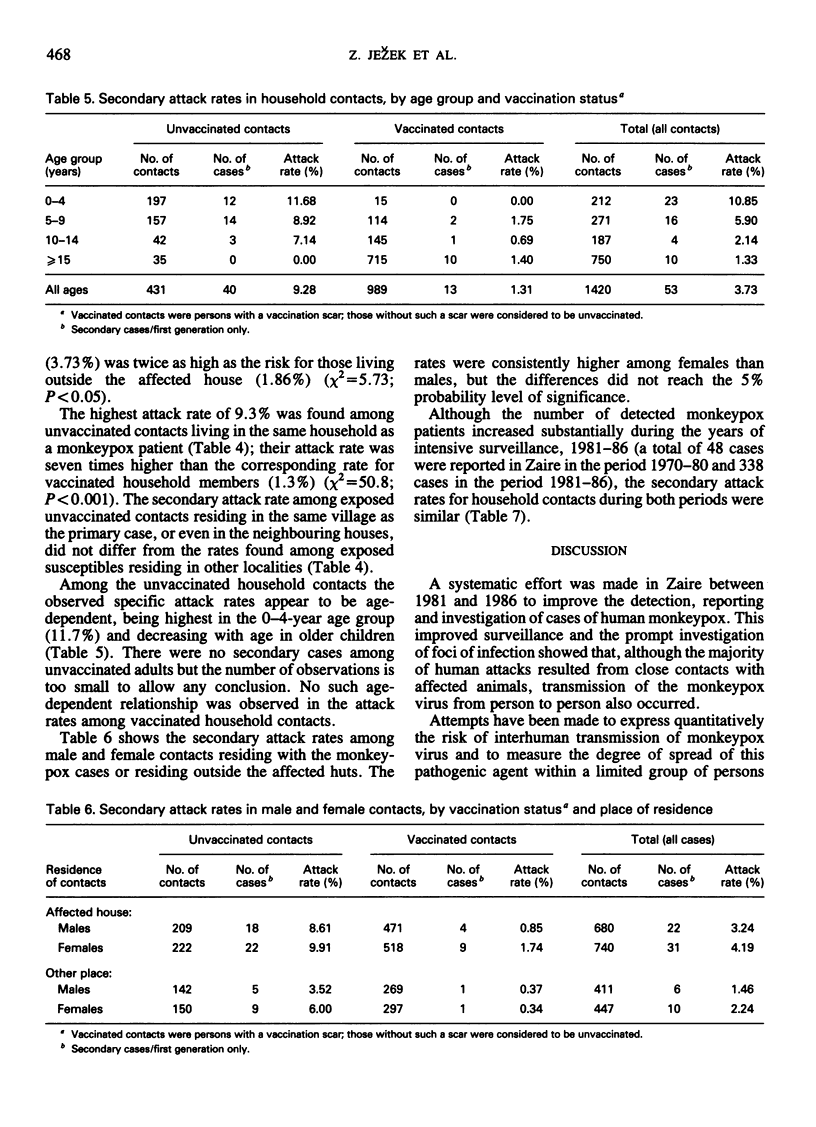
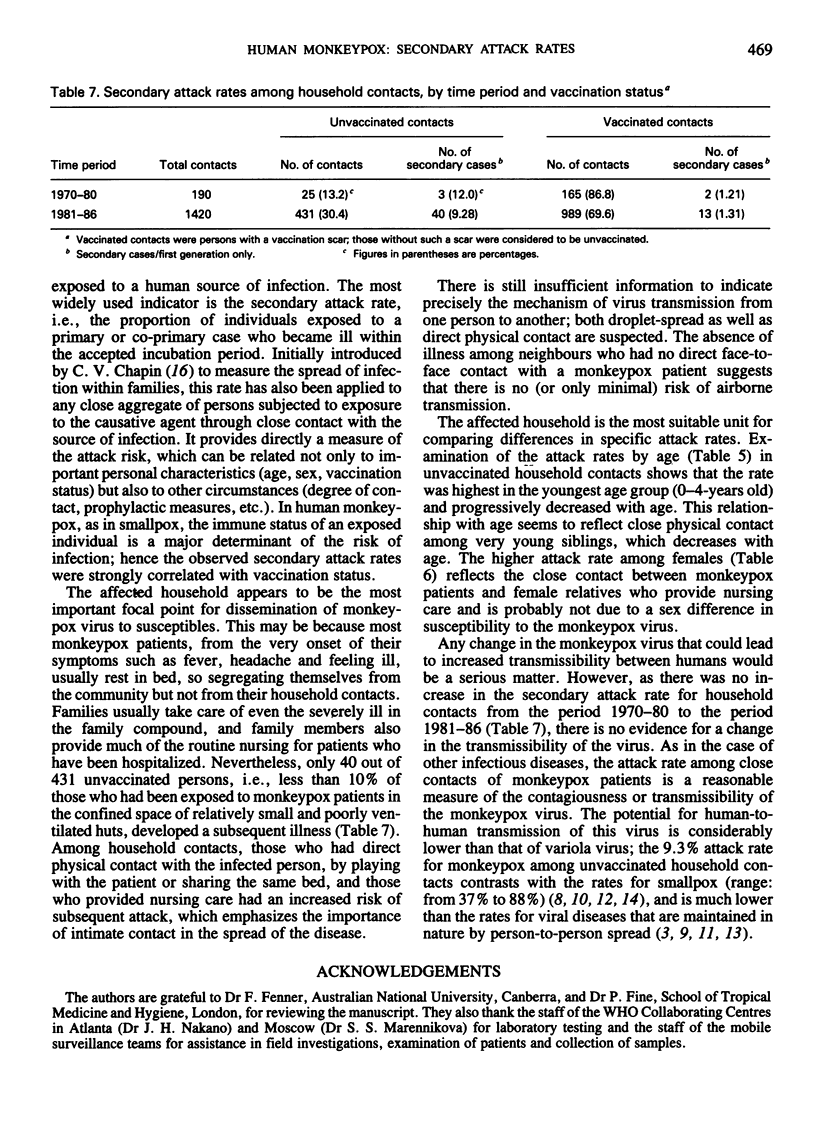
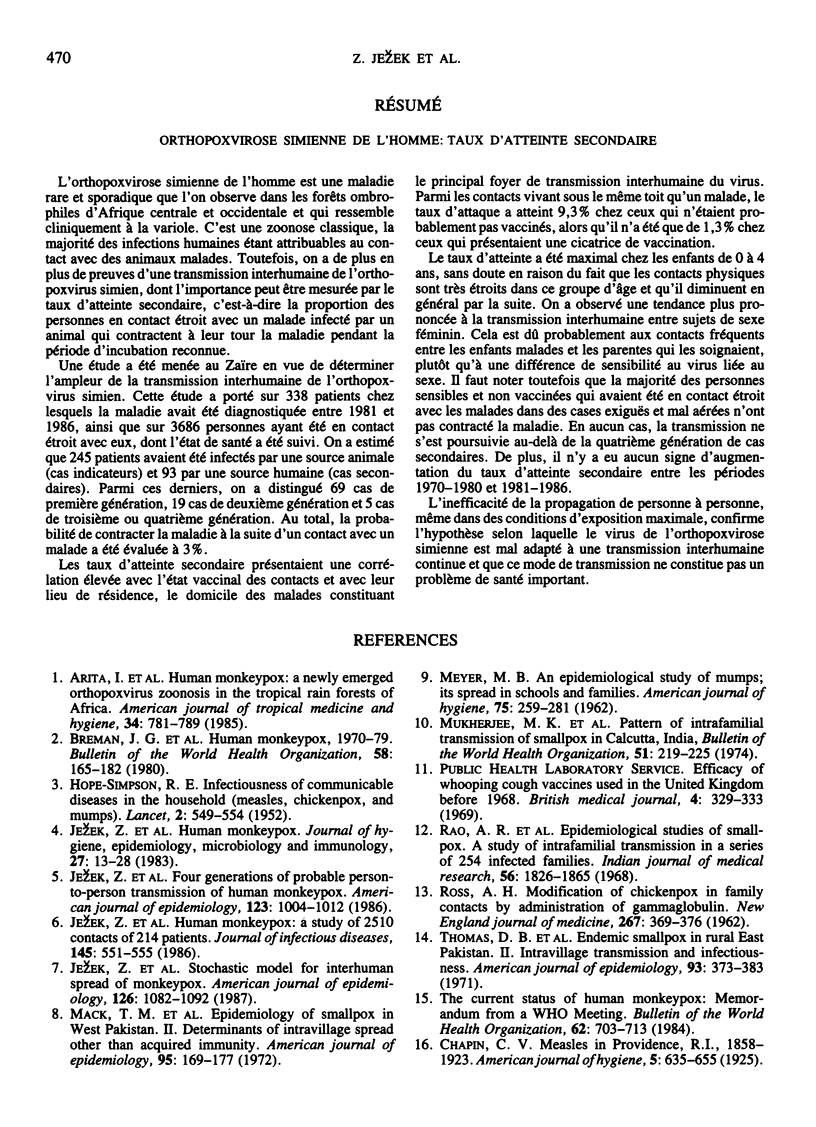
Selected References
These references are in PubMed. This may not be the complete list of references from this article.
- Arita I., Jezek Z., Khodakevich L., Ruti K. Human monkeypox: a newly emerged orthopoxvirus zoonosis in the tropical rain forests of Africa. Am J Trop Med Hyg. 1985 Jul;34(4):781–789. doi: 10.4269/ajtmh.1985.34.781. [DOI] [PubMed] [Google Scholar]
- Breman J. G., Kalisa-Ruti, Steniowski M. V., Zanotto E., Gromyko A. I., Arita I. Human monkeypox, 1970-79. Bull World Health Organ. 1980;58(2):165–182. [PMC free article] [PubMed] [Google Scholar]
- MEYER M. B. An epidemiologic study of mumps; its spread in schools and families. Am J Hyg. 1962 Mar;75:259–281. doi: 10.1093/oxfordjournals.aje.a120248. [DOI] [PubMed] [Google Scholar]
- Mack T. M., Thomas D. B., Muzaffar Khan M. Epidemiology of smallpox in West Pakistan. II. Determinants of intravillage spread other than acquired immunity. Am J Epidemiol. 1972 Feb;95(2):169–177. doi: 10.1093/oxfordjournals.aje.a121382. [DOI] [PubMed] [Google Scholar]
- Mukherjee M. K., Sarkar J. K., Mitra A. C. Pattern of intrafamilial transmission of smallpox in Calcutta, India. Bull World Health Organ. 1974;51(3):219–225. [PMC free article] [PubMed] [Google Scholar]
- ROSS A. H. Modification of chicken pox in family contacts by administration of gamma globulin. N Engl J Med. 1962 Aug 23;267:369–376. doi: 10.1056/NEJM196208232670801. [DOI] [PubMed] [Google Scholar]
- Rao A. R., Jacob E. S., Kamalakshi S., Appaswamy S., Bradbury Epidemiological studies in smallpox. A study of intrafamilial transmission in a series of 254 infected families. Indian J Med Res. 1968 Dec;56(12):1826–1854. [PubMed] [Google Scholar]
- SIMPSON R. E. H. Infectiousness of communicable diseases in the household (measles, chickenpox, and mumps). Lancet. 1952 Sep 20;2(6734):549–554. doi: 10.1016/s0140-6736(52)91357-3. [DOI] [PubMed] [Google Scholar]
- Thomas D. B., Arita I., McCormack W. M., Khan M. M., Islam S., Mack T. M. Endemic smallpox in rural East Pakistan. II. Intervillage transmission and infectiousness. Am J Epidemiol. 1971 May;93(5):373–383. doi: 10.1093/oxfordjournals.aje.a121270. [DOI] [PubMed] [Google Scholar]


